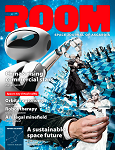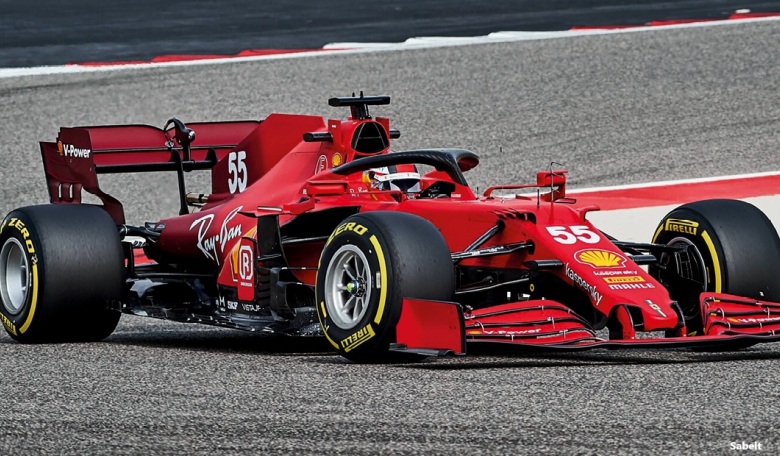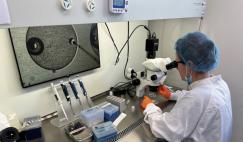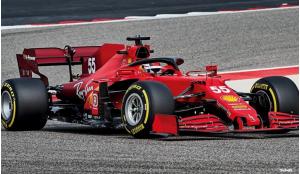The shift in business focus embodied in the term NewSpace not only marked a new era of exploration but also opened doors to innovation through collaboration between industries, enabling faster technological advancements. Private companies brought agility and market-driven solutions to the space economy, contrasting with the traditionally slower pace of government organisations. Moreover, to enhance efficiency and cost control, it is imperative to expand the supply chain, involving new companies from different backgrounds in the space industry.
For Sabelt, a deep investigation into common aspects of the aviation and automotive industries identified a suitable candidate technology and, since 2011, the company has transferred technology from the motor-racing industry, with its high-performance automotive parts, to the equally demanding field of space cargo modules.

Technology transfer
It was clear that some advantages in the motorsport industry could be extended to space with several potential improvements, not least in cost (because the costs of automotive components are very low thanks to high production volumes). The leading product transferred to the space industry – the type of webbing used in high-performance seat-belts – has been of fundamental importance in the weightless environment, simply because straps are required to hold everything in place.
The primary reasons why the webbing developed for racing has been applied to space straps include the low weight (21 g per metre), exceptional tensile strength (30 kN per metre) and their availability in-house without the limitation of minimum purchase quantities. In fact, it has been possible to reduce the weight of the webbing system by more than 140 kg, while maintaining the same mechanical resistance and payload safety. As with any other weight-reduction mechanism for space, this improves cargo capacity and reduces mission cost.
These advantages have been consolidated with automotive processes to develop the cargo net, which is pre-assembled to reduce the astronauts’ time and effort. The quick-opening motorsport buckle makes the payload immediately available, reducing the time required to discharge and transfer, and the volume required for storage on the Internation Space Station (being simply a textile which can be easily stored on the module floor). Cost is reduced because the nets take up less space than the corresponding straps.
As a first step, we suggested using them in a racing configuration and in many cases they did not require modification to meet the full satisfaction of space customers. Sometimes, it has been necessary to make slight adjustments to match the space environment requirements: on the rotary buckle used for the cargo net system, for example, we introduced a secondary safety system to avoid accidental opening. Also, on the quick-release buckle for the straps we needed to change the spring below the push button to adjust the opening force.
This technological transfer was not merely a logistical challenge but also a testament to the flexibility and innovation potential of automotive solutions. For Sabelt, it demonstrated how established expertise in one industry could pioneer advancements in another.
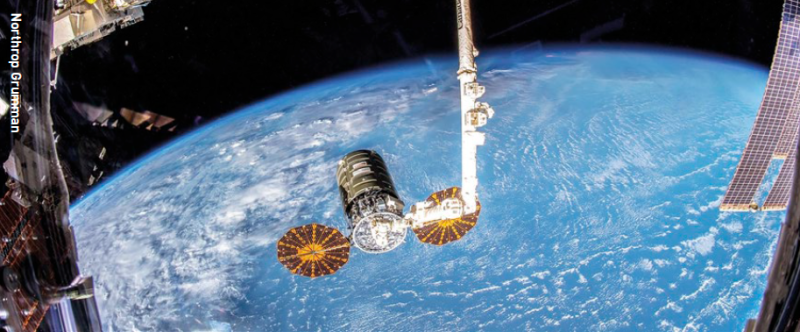 Cygnus spacecraft have delivered more than 138,000 pounds of equipment, science experiments and supplies to sustain ISS astronauts under NASA’s Commercial Resupply Services contracts.
Cygnus spacecraft have delivered more than 138,000 pounds of equipment, science experiments and supplies to sustain ISS astronauts under NASA’s Commercial Resupply Services contracts.
Validation
To enhance efficiency and cost control, it is imperative to expand the supply chain, involving new companies from different backgrounds in the space industry
In a technical sense, the basic quality to achieve the standard requirement for high performance motorsport is so high that there is little difference from requirements for space and parts do not need to be re-qualified. To supply parts, components and assemblies for Formula One, the industry was already used to making lightweight parts with high mechanical resistance. These components were rigorously tested under extreme conditions, aligning perfectly with the demands of space environments.
Several technical aspects are common to ‘race’ and ‘space’: both are dangerous environments for humans and the maximum safety is necessary to prevent loss of life. However, while the automotive industry often focuses on mass production, space applications demand customisation and precision. To guarantee optimal safety, it is essential to use the most advanced technology available and render it suitable for low volume production. This creates a unique challenge in adapting processes while maintaining efficiency.
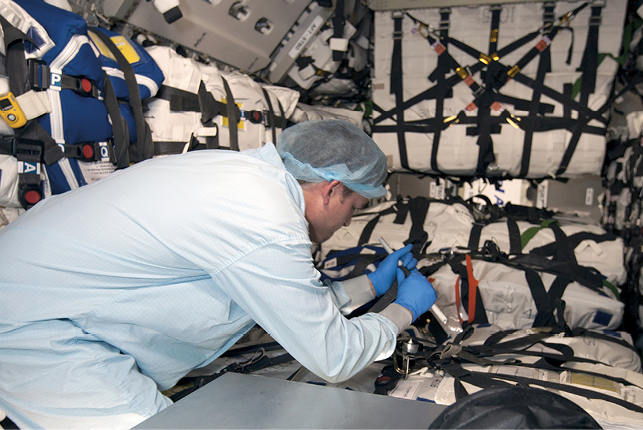 Pre-flight installation on Cygnus and checking of straps
Pre-flight installation on Cygnus and checking of straps
An important role in meeting this challenge has been played by Sabelt’s in-house laboratory where all components are developed and certified mechanically using a special test bench. A dynamic test sledge has been used to validate the cargo nets at 9.5 g (to simulate launch accelerations) for a 40 mm maximum displacement of payload and identify the correct geometries for the retaining straps and nets. The static test department has been involved in measuring the tensile strength of the webbing, before and after aging (due to abrasion, ultra-violet exposure and humidity). These evaluations underline the importance of interdisciplinary expertise, combining mechanical engineering, materials science and operational testing to deliver optimised solutions for space missions.
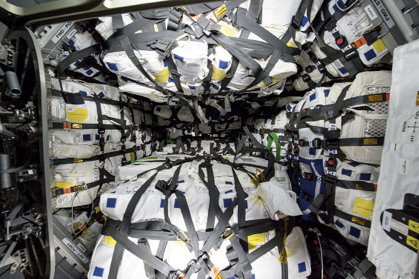 Cygnus module interior showing Sabelt straps and cargo net system, including quick-release buttons (red).
Cygnus module interior showing Sabelt straps and cargo net system, including quick-release buttons (red).
Feedback from astronauts is also of crucial importance and the astronauts’ opinions on the technological solutions has been important in matching the operational requirements to purely technical considerations. For example, the introduction of buckles and adjusters made a new integration procedure possible, both for ground operation and in-orbit activities, and proved popular in supporting the astronauts’ work on the station. The positive feedback and results provided important added-value in moving forward with new developments. In the long term, this approach also encourages collaboration between astronauts and engineers, ensuring that user feedback directly informs the design of future components.
Further developments
To understand which materials to use and how to transfer them ‘from race to space’, it has been essential to conduct internal research while maintaining a constant relationship with our space customers. This iterative process demonstrates the importance of adaptability in materials engineering and customer relations, ensuring long-term partnerships in an evolving industry.
As a result of this analysis, it became evident that a huge number of materials could be considered, more than initially expected. For example, expanded polypropylene (EPP) is a material commonly used as a shock absorber in automotive applications and as a mechanical energy absorber for logistics applications. But one of the main distinctive properties is its flame resistance, which makes it suitable for the space environment.
The initial analysis of EPP opened up new possibilities for its use beyond its conventional applications, prompting further investigation into its versatility for extreme environments. Its behaviour under thermal stress and its potential to serve as a multipurpose material expanded its relevance for innovative designs in space hardware.
Following the initial qualification (which addressed flammability, toxicity and off-gassing) we identified additional properties: EPP is lightweight (with a density 38 g/l), resistant to compression, has ballistics properties and can be used for thermal and acoustic insulation, and potential radiation shields – all of which is generating interest among potential space customers.
These additional characteristics have elevated EPP from a basic component to a key candidate for multifunctional systems in future space missions. By integrating EPP into prototypes for payload protection and environmental shielding, we aim to demonstrate its scalability for large-scale deployment in diverse space programmes.
Looking at the above properties, Sabelt has joined customers and space agencies to research and make developments to improve a number of components on the various European or American programmes for low Earth orbit space stations, lunar spacecraft, vehicles and habitation. Collaborating with agencies has not only accelerated the adoption of materials like EPP but also fostered a culture of innovation, encouraging shared expertise to address challenges such as durability in prolonged missions and adaptability for evolving spacecraft designs.
These components and systems have enabled Sabelt to become a leading specialist for cargo payload accommodation in space operations, in particular for the International Space Station. However, the technology transfer is not yet complete and the next step will probably be the most significant for Sabelt, that of transferring the company’s core business components - seats and seatbelts - from automotive to spacecraft and lunar rover applications.
While the transition involves significant technical challenges, including adapting designs to the unique requirements of microgravity and radiation exposure, it also presents immense opportunities for innovation in astronaut comfort and safety. These advancements could redefine standards for seating systems in space vehicles, setting a new benchmark for ergonomic and lightweight designs.
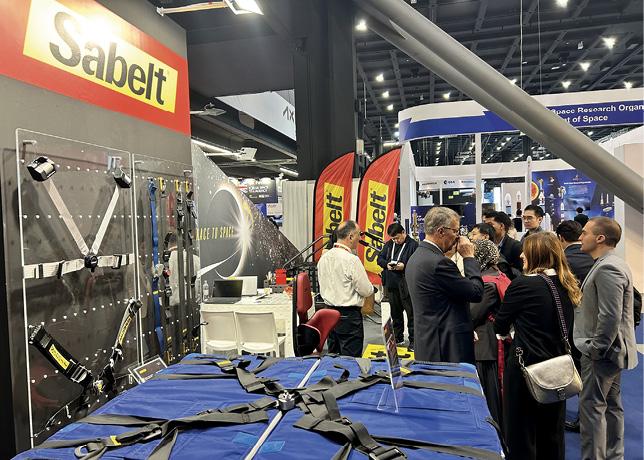 The Sabelt stand at the 2024 International Astronautical Congress exhibition in Milan, Italy.
The Sabelt stand at the 2024 International Astronautical Congress exhibition in Milan, Italy.
Lunar vehicles
Sabelt plans to use components, materials, processes and technology developed for the automotive business to propose seating systems for spacecraft and other vehicles used for exploration
Specifically, Sabelt plans to use components, materials, processes and technology developed for the automotive business to propose seating systems for spacecraft and other vehicles used for exploration.
The basic parameter is, again, the weight (or mass), which is a key part of a vehicle’s performance. In terms of supercar production, this now includes the weight of batteries and continually needs to be reduced. The low weight of the systems can give a huge advantage in logistic operation, reducing the transportation cost at launch, while it is possible to find new functions that will make the products flexible for different applications.
For example, modular seating systems could be designed to accommodate both human passengers and cargo, allowing for rapid reconfiguration depending on mission requirements. Such flexibility could become a cornerstone of future space vehicle design, enabling cost-effective solutions for diverse exploration needs. These could range from seating for lunar rovers (for long distance pressurised transportation or local mobility solutions for materials and passengers) to spacecraft with crew members and passengers.
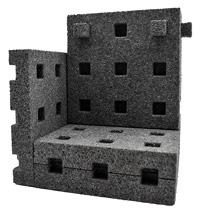 Sabelt’s Space Brick, unveiled at the 74th International Astronautical Congress in Baku (October 2023), is a flame retardant expanded polypropylene element developed for extreme environments. It can be used for logistics containers during a space trip and disassembled to create new objects (such as floors, shelves and tables) for lunar habitation modules.
Sabelt’s Space Brick, unveiled at the 74th International Astronautical Congress in Baku (October 2023), is a flame retardant expanded polypropylene element developed for extreme environments. It can be used for logistics containers during a space trip and disassembled to create new objects (such as floors, shelves and tables) for lunar habitation modules.
In addition, the use of advanced composite materials could offer benefits such as resistance to extreme temperatures, reduced material fatigue and enhanced structural integrity. These attributes are particularly vital for lunar rovers and pressurised vehicles, where environmental conditions and mission durations impose severe constraints on material performance.
The Moon will be a target for habitation too, in that components and parts developed for orbital modules will initially be used for surface habitation and shelter. In this context, Sabelt’s expertise in lightweight, durable and ergonomic solutions could extend beyond vehicles to include infrastructure components, such as collapsible seats for habitat modules or multi-functional harness systems for surface operations. These innovations would align with the growing vision of sustainable and scalable human presence on the Moon.
As exploration missions push further into deep space, these systems will need to evolve to address new challenges, including prolonged exposure to radiation and the physiological impacts of extended microgravity. By leveraging its core competencies in material science and ergonomic design, Sabelt aims to set new standards for safety and adaptability in human spaceflight.
About the author
Diego Cagna is Special Application Manager at Sabelt. After graduation, he began working for motorsport companies as a product developer in their engineering departments. Thanks to his connections with drivers and dealers, as well as expertise gained in racing products, he was selected as Marketing Director for Sparco and later as Sales and Marketing Manager for Sabelt. During a joint venture with Brembo, he served as Corporate Product Developer, expanding his expertise by adding Thales Alenia Space as a new customer in the space industry. In 2015, a new division of Sabelt - Special Application - was founded and Diego became the Special Application Manager, focusing on expanding the company’s presence in the aerospace and aeronautics sectors. After the successful introduction of products into the aerospace market, this division became Sabelt’s Aerospace Division.


